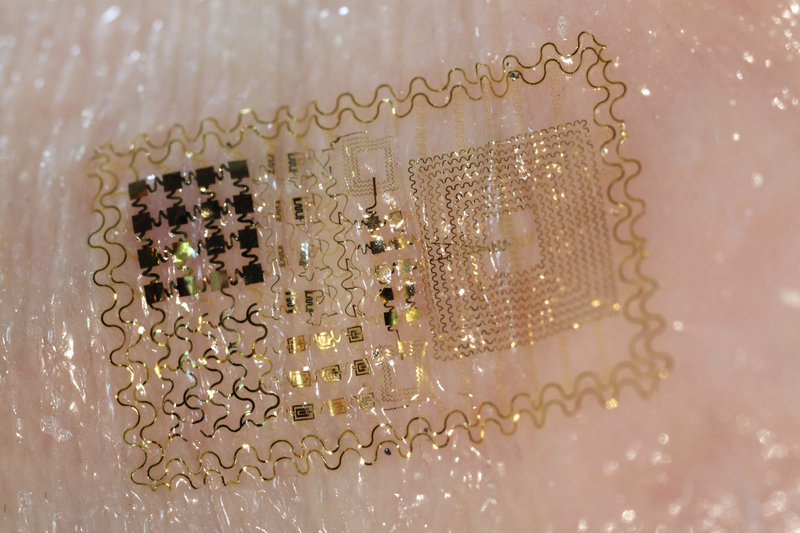WASHINGTON – Monitoring a patient’s vital signs such as temperature and heart rate could one day be as simple as sticking on a tiny, wireless patch, sort of like a temporary tattoo.
Eliminating the bulky wiring and electrodes used in current monitors would make the devices more comfortable, says an international team of researchers reporting in today’s edition of the journal Science.
“What we are trying to do here is to really reshape and redefine electronics … to look a lot more like the human body, in this case the surface layers of the skin,” said John A. Rogers of the University of Illinois. “The goal is really to blur the distinction between electronics and biological tissue.”
The researchers embedded electronic sensors in a film thinner than the diameter of a human hair, which was placed on a polyester backing like those used for temporary tattoos popular with kids. The result was a sensor that was flexible enough to move with the skin and would adhere without adhesives.
The researchers said the devices had remained in place for up to 24 hours. Rogers said in a briefing that, while normal shedding of skin cells would eventually cause the monitors to come off, they might remain in place as long as two weeks.
In addition to monitoring patients in hospitals, other uses for the devices could include monitoring brain waves, muscle movement and emitting heat to help heal wounds, Rogers said.
The device will help fill the need for equipment that is more convenient and less stressful for patients, permitting easier and more reliable monitoring, said Zhenqiang Ma, an engineering professor at the University of Wisconsin, who was not part of the research team. The electronic skin adheres like an adhesive bandage, he noted in a commentary on the report.
Rogers is a founder of the company MC10, based in Cambridge, Mass., which is working to develop commercial uses of the devices, but he declined to speculate on how soon the electronic skin would be ready for market or what it would cost.
The monitor looks rather like a bandage and contains an antenna that could be used to transmit data, though a radio to do that transmitting has not yet been tested, Rogers said.
Send questions/comments to the editors.



Success. Please wait for the page to reload. If the page does not reload within 5 seconds, please refresh the page.
Enter your email and password to access comments.
Hi, to comment on stories you must . This profile is in addition to your subscription and website login.
Already have a commenting profile? .
Invalid username/password.
Please check your email to confirm and complete your registration.
Only subscribers are eligible to post comments. Please subscribe or login first for digital access. Here’s why.
Use the form below to reset your password. When you've submitted your account email, we will send an email with a reset code.